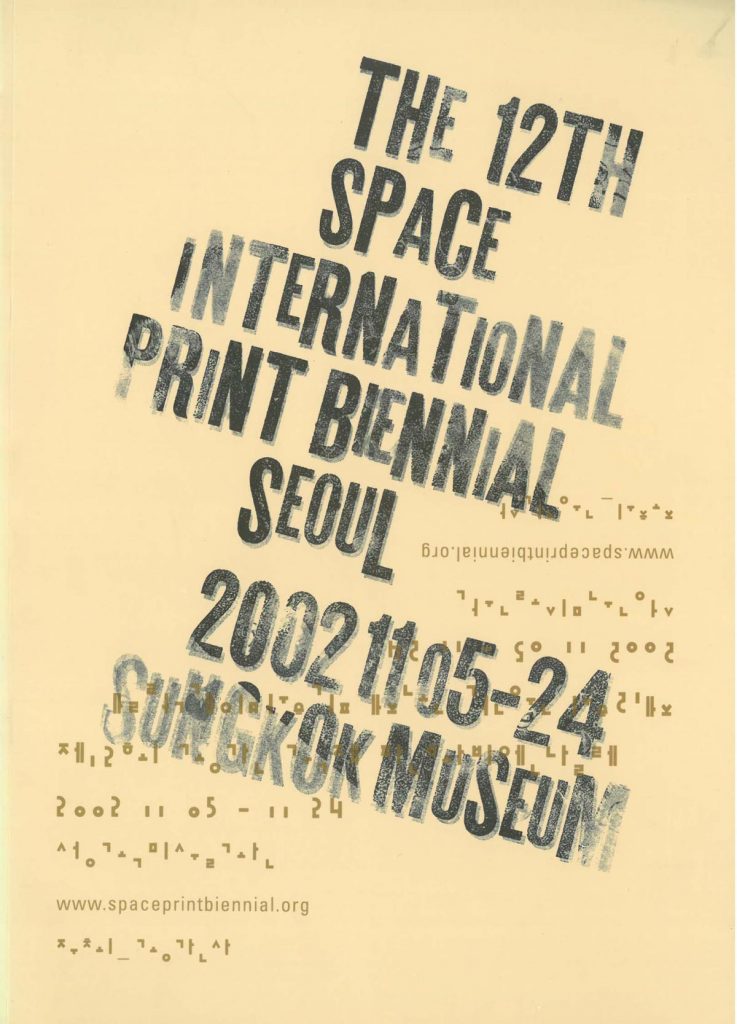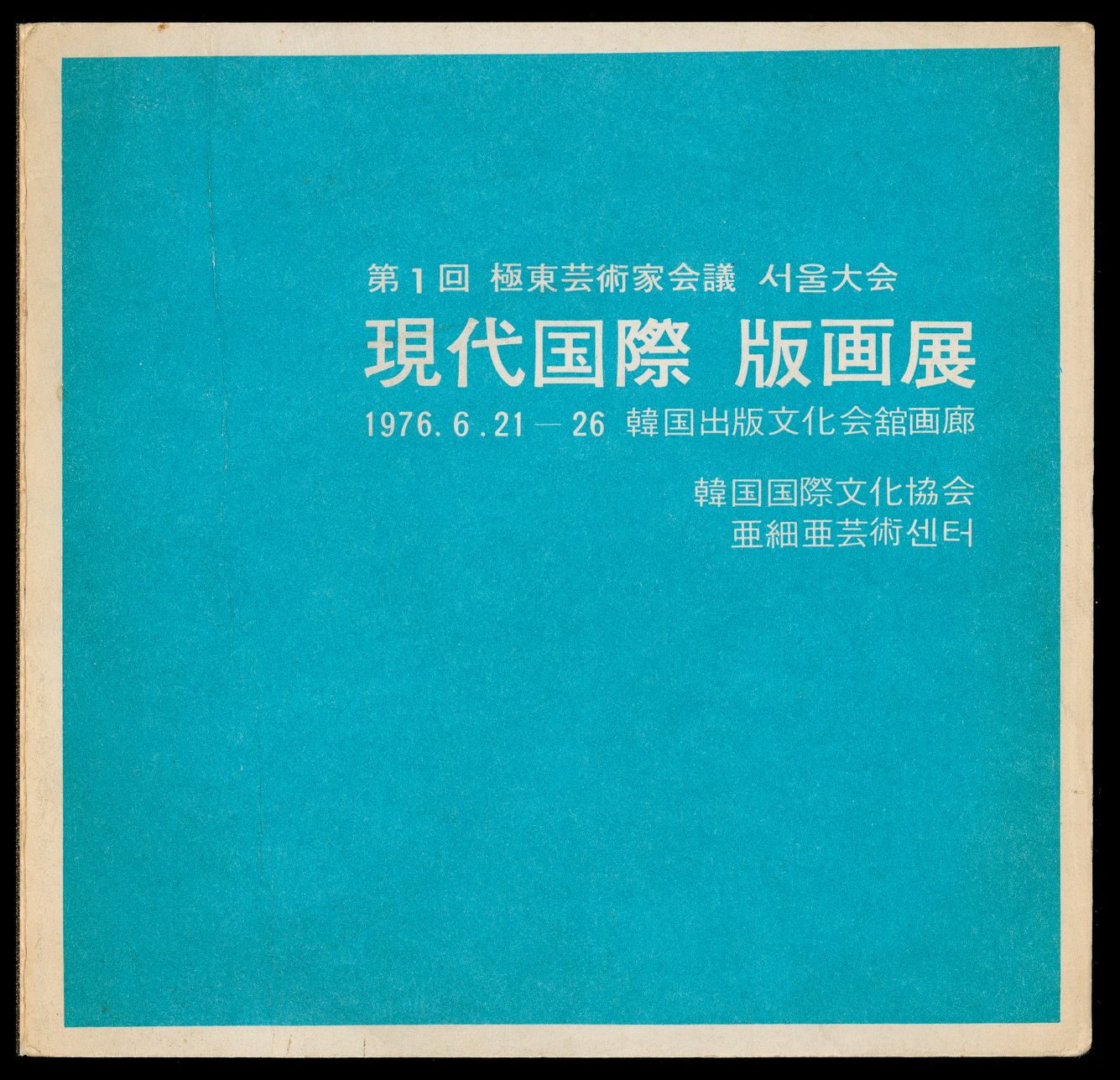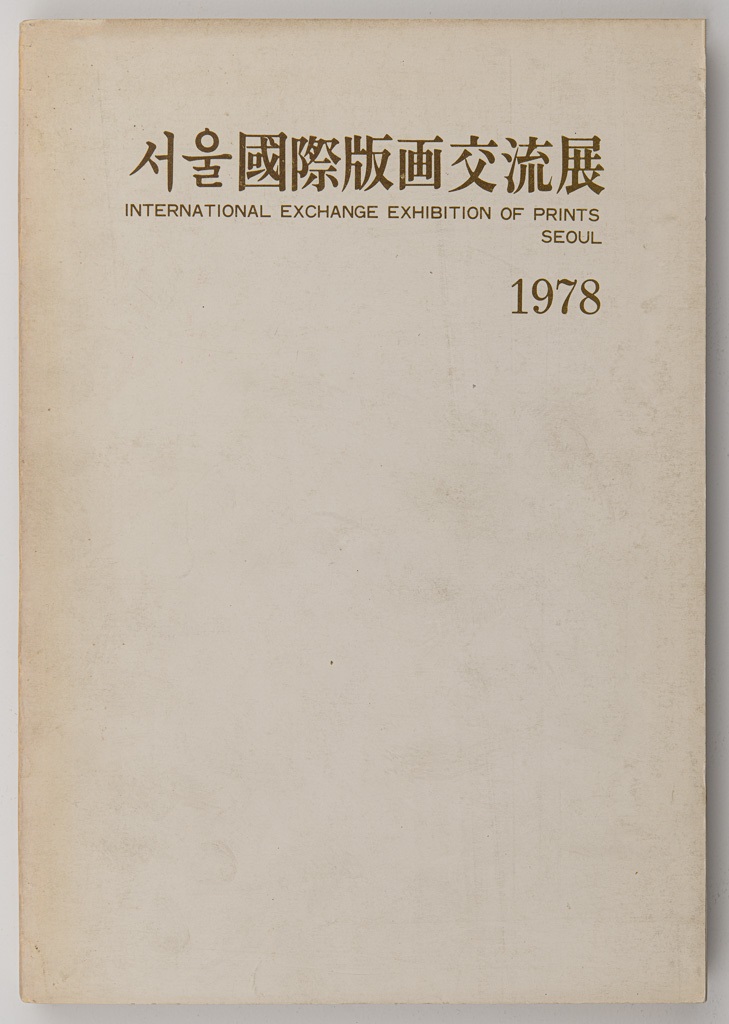
The Twelfth SPACE International Print Biennial, Poster, 2002, Image provided by Sungkok Art Museum
SPACE International Print Biennial
* Source: MMCA
Related
-

Exhibition of Contemporary International Prints
Exhibition of Contemporary International Prints was held from June 21 to 26 in 1976 at the Korea Publishers Association Hall. It was one of the commemorative programs for the first Far East Artists Conference, which was organized by four Pacific countries—South Korea, Taiwan, Japan, and the U.S.—to promote understanding of each other and friendship among them through art and culture. During the conference themed “Comparative Studies of East Asian Culture and Arts,” the print exhibition was held, and discussions on “Contemporary Prints in Asia,” “Masks and Pantomimes,” and “Types and Styles of Chinese, Japanese, and Korean Music” were conducted. Moreover, the classic Japanese comedy Kyōgen and a joint concert by China, Japan, and Korea were performed, and documentary films from China, Japan, and Korea were screened. The participating artists from South Korea were members of the Korean Contemporary Printmakers Association [Hanguk hyeondae pangwagag hyeophoe], including Kang Whansup, Kang Kukjin, Kim Kulim, Kim Sangyu, Kim Chonghak, Kim Choungza, Baik Kumnam, Suh Seungwon, Youn Myeungro, Yoo Kangyul, Rhee Sangwooc, Lee Seduk, and Han Unsung. This exhibition was one of the outcomes of international exchanges in which the Korean Contemporary Printmakers Association engaged in the 1970s and showed how Korean art had become more active in international exchanges through prints. Furthermore, the fact that prints were selected as a main medium at the first Far East Artists Conference implies that there was a strong international interest in printmaking at the time.
-

SPACE (Gonggan)
SPACE was a synthetic art magazine, first published by architect Kim Swoogeun in November 1966. In total 600 volumes were published up to the November issue in 2017. The magazine played a significant role in delivering news about domestic and international artworld news as the first specialized art magazine in Korea. For instance, the inaugural issue published texts by Jin Hong-seop and Park Seo-Bo, and the second issue focused on the thirty-third Venice Biennale. In 1960, Kim Swoogeun had founded an architectural design office, titled the Space Architecture Research Institute (now the Space Group). In terms of his other contributions toward encouraging the development of Korean contemporary culture, Kim also opened the Space Gallery in 1972 and a small theatre called the Gonggan Sarang in 1979. Until the 1980s, the magazine covered a diverse field of cultural interests, including architecture, art, and theater, however, it transitioned into a professional architecture magazine after changing the title to from Gonggan (Space) to SPACE from July 1994.
-

1978 Seoul International Print Exchange Exhibition
The 1978 International Exchange Exhibition of Prints Seoul was held at the National Museum of Modern Art (now MMCA) from March 14 to 23 in 1978. It was organized by the Korean Contemporary Printmakers Association [Hanguk hyeondae panhwaga hyeophoe] and sponsored by Gyegan Misool art magazine of the JoongAng Ilbo newspaper company. Artists from five countries (Korea, Taiwan, Hong Kong, Japan, and the U.S.) participated in the exhibition. There were a total of thirty-eight Korean artists: Kang Kukjin, Kang Whansup, Kwak Duckjun, Kwon Yeongsuk, Kim Kulim, Kim Minja, Kim Bongtae, Kim Sangku, Kim Sangyu, Kim Seon, Kim Youngchull, Kim Choungza, Kim Tchahsup, Kim Taeho, Kim Hyungdae, Ro Jaewhoang, Bae Yoong, Baik Kumnam, Suh Seungwon, Seok Ranhui, Youn Myeungro, Lee Kangso, Rhee Sangwooc, Lee Sunman, Lee Ywanho, Lee Ufan, Lee Eunsan, Lee Inhwa, Chang Hwajin, Chun Kyungja, Oan Kyu, Chung Chanseung, Cho Kookjeong, Jo Junyeong, Cha Myunghi, Choi Insu, Han Unsung, and Hwang Kyubaik. Ninety-seven artists submitted a total of 300 works, including fifty-nine from overseas. Korean artists demonstrated a wide range of trends in contemporary Korean printmaking, reflecting contemporaneous art, such as conceptual or monochrome art, geometric or expressionistic abstraction, and pop art, and emphasizing Korean and indigenous sentiments. The participation not only by printmakers but also by artists working in various mediums shows the art community’s interest in print genre at the time. In the 1970s, the Korean Contemporary Printmakers Association focused on international exchanges through prints, and this exhibition is one of its prominent achievements.






